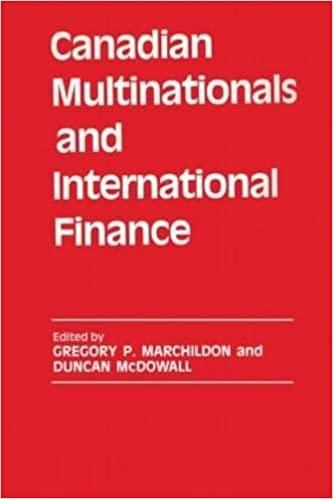Question
At the end of Year 5, Experian Information Solutions, Inc. (Experian) has total assets of $555,443, long-term debt of $1,839, and common equity at book
At the end of Year 5, Experian Information Solutions, Inc. (Experian) has total assets of $555,443, long-term debt of $1,839, and common equity at book value of $402,759 (amounts in thousands). Suppose an equity buyout group is planning to acquire Experian in an LBO as of the beginning of Year 6. The group plans to nance the buyout with 60% debt that has an interest cost of 10% per year and 40% common equity. Analysts for the buyout group project free cash ows to all debt and equity capital stakeholders as follows (in thousands): Year 6, $52,300; Year 7, $54,915; Year 8, $57,112; Year 9, $59,396; and Year 10, $62,366. Because Experian is not a publicly traded rm, it does not have a market equity beta. The company most comparable to Experian is Equifax. Equifax has an equity beta of 0.86. The market value of Equifaxs debt is $366.5 thousand, and its common equity is $4,436.8 thousand. Assume an income tax rate of 35% throughout this problem. This problem sets forth the steps you might follow in valuing an LBO candidate. 1) Compute the unlevered market equity (asset) beta of Equifax. Assuming that the unlevered market equity beta of Equifax is appropriate for Experian, compute the equity beta of Experian after the buyout with its new capital structure. Compute the weighted-average cost of capital of Experian after the buyout. Assume a risk-free interest rate of 4.2% and a market risk premium of 5.0%. 4) The analysts at the buyout rm project that free cash ows for all debt and equity capital stakeholders of Experian will increase 5.0% each year after Year 10. Compute the present value of the free cash ows at the weighted-average cost of capital. Ignore the midyear adjustment related to the assumption that cash ows occur, on average, over the year. In computing the continuing value, apply the 5.0% projected growth rate directly to the free cash ows of Year 10. Regardless of your answers to 3), assume that the cost of equity is 8%. Cost of equity 8% growth rate 5% Year 5 6 7 8 9 10 11 Free cash flows 52,300 54,915 57,112 59,396 62,366 Continuing value PV factors PV of Free cash flows PV of Continuing Value Total
Step by Step Solution
There are 3 Steps involved in it
Step: 1

Get Instant Access to Expert-Tailored Solutions
See step-by-step solutions with expert insights and AI powered tools for academic success
Step: 2

Step: 3

Ace Your Homework with AI
Get the answers you need in no time with our AI-driven, step-by-step assistance
Get Started


